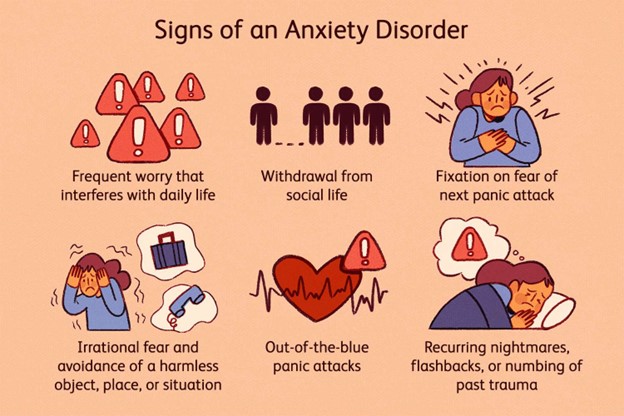A nurse is teaching a newly-admitted client about the possible physical effects of alcohol withdrawal. Which of the following manifestation should the nurse include in the reaching? (Select all that apply.)
Nystagmus
Illusions
Polyphagia
Tremors
Seizures
Correct Answer : B,D,E
A. Nystagmus: Nystagmus is not a typical manifestation of alcohol withdrawal. It is more commonly associated with intoxication or neurological conditions. Therefore, it is not included in the effects of alcohol withdrawal.
B. Illusions: Illusions (misinterpretations of external stimuli) are common during alcohol withdrawal, especially in severe cases such as withdrawal delirium (delirium tremens). Clients may misinterpret shadows or objects as threatening.
C. Polyphagia: Polyphagia (excessive eating) is not a recognized manifestation of alcohol withdrawal. Clients with withdrawal may experience nausea or a lack of appetite rather than an increased appetite.
D. Tremors: Tremors, often called "the shakes," are one of the most common early signs of alcohol withdrawal. They usually begin within hours after alcohol cessation.
E. Seizures: Seizures, specifically generalized tonic-clonic seizures, are a serious complication of alcohol withdrawal. They can occur within 6–48 hours after the last drink and are part of alcohol withdrawal syndrome.
Nursing Test Bank
Naxlex Comprehensive Predictor Exams
Related Questions
Correct Answer is D
Explanation
A. "How long has this been going on?":
While this question is important for gathering more information, it may come across as more investigative or less empathetic at this initial stage of the conversation.
B. "Why do you think you are so anxious?":
While it's important to understand the client's perspective, this response might come across as confrontational or judgmental. It's better to create an open and non-judgmental environment for the client to share their feelings.
C. "Have you talked to your parents about this yet?":
This response assumes that the client has parents to talk to and may not be relevant for all clients. It's also important to establish trust and rapport with the client before asking about their support network.
D. "It sounds like you're having a difficult time.":
This response is empathetic and validating. It acknowledges the client's feelings without making assumptions or demands, creating a supportive environment for further discussion.

Correct Answer is ["A","B","C","D"]
Explanation
A. Lithium: Lithium is a mood stabilizer commonly used in the treatment of bipolar disorder. It helps to control mood swings and prevent the recurrence of manic and depressive episodes.
B. Carbamazepine: Carbamazepine is an anticonvulsant medication that has been found effective in managing mood swings in bipolar disorder. It can help stabilize mood and prevent manic episodes.
C. Valproate (Valproic acid or Divalproex sodium): Valproate is another anticonvulsant medication that is used as a mood stabilizer in bipolar disorder. It can help control manic and mixed episodes.
The following options are not used to treat bipolar disorder:
D. Paroxetine: SSRIs, including paroxetine, carry a risk of inducing mania or hypomania in individuals with bipolar disorder. This risk is why these medications are usually avoided or used cautiously, always in conjunction with a mood stabilizer like lithium, valproate, or atypical antipsychotics. Before initiating paroxetine, it’s crucial that the client is stabilized with a mood stabilizer to minimize the risk of mood switching (i.e., moving from depression to mania or hypomania).
E. Donepezil: Donepezil is a medication used to treat Alzheimer's disease and other forms of dementia. It is not used to treat bipolar disorder.
Whether you are a student looking to ace your exams or a practicing nurse seeking to enhance your expertise , our nursing education contents will empower you with the confidence and competence to make a difference in the lives of patients and become a respected leader in the healthcare field.
Visit Naxlex, invest in your future and unlock endless possibilities with our unparalleled nursing education contents today
Report Wrong Answer on the Current Question
Do you disagree with the answer? If yes, what is your expected answer? Explain.
Kindly be descriptive with the issue you are facing.
